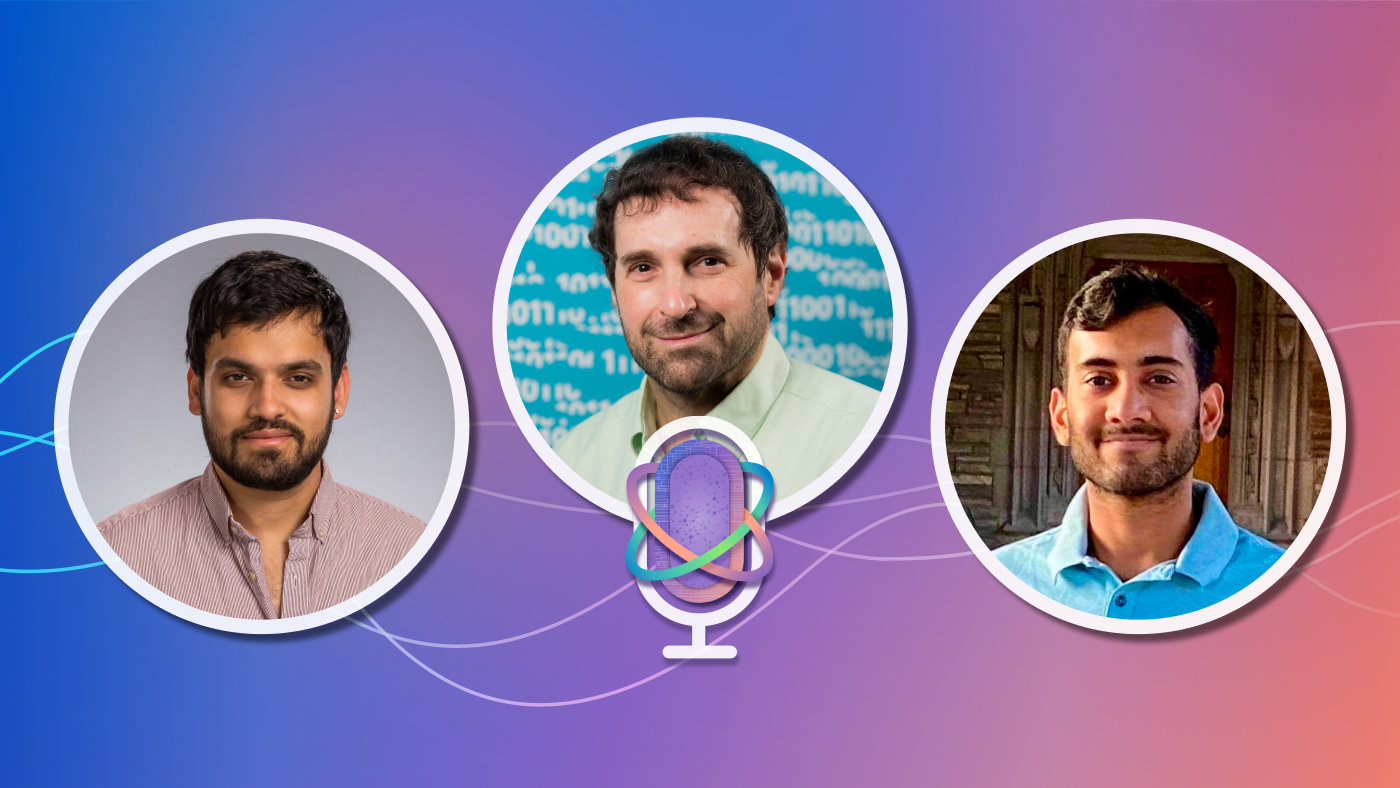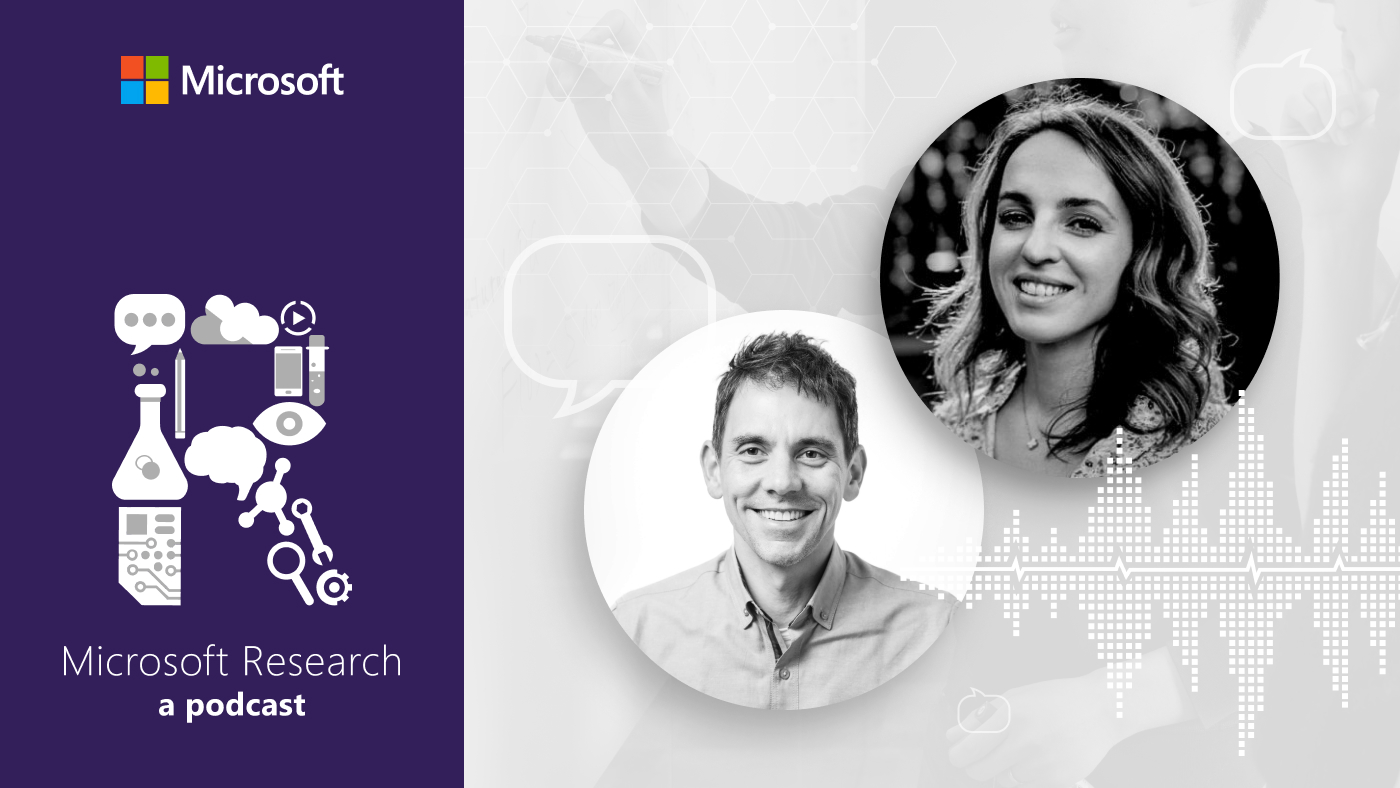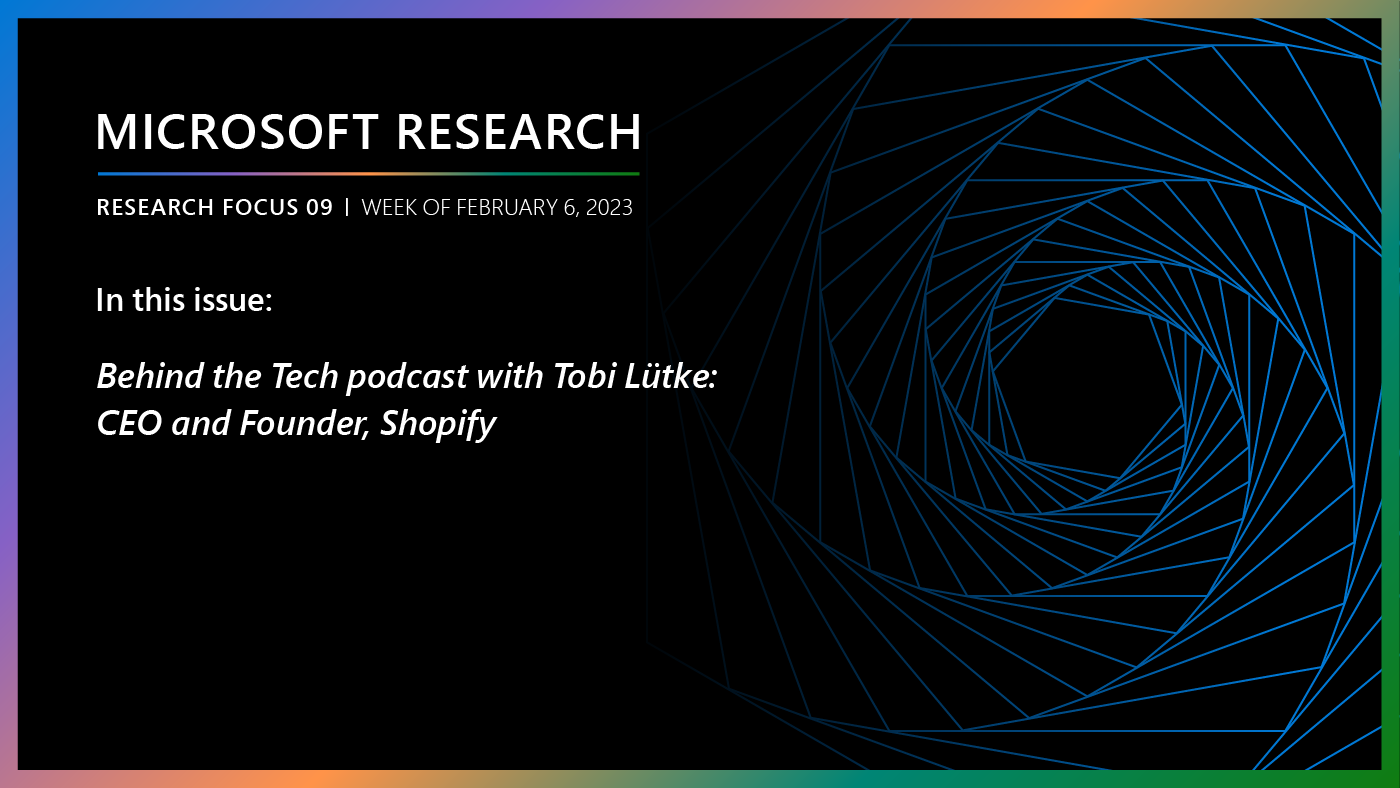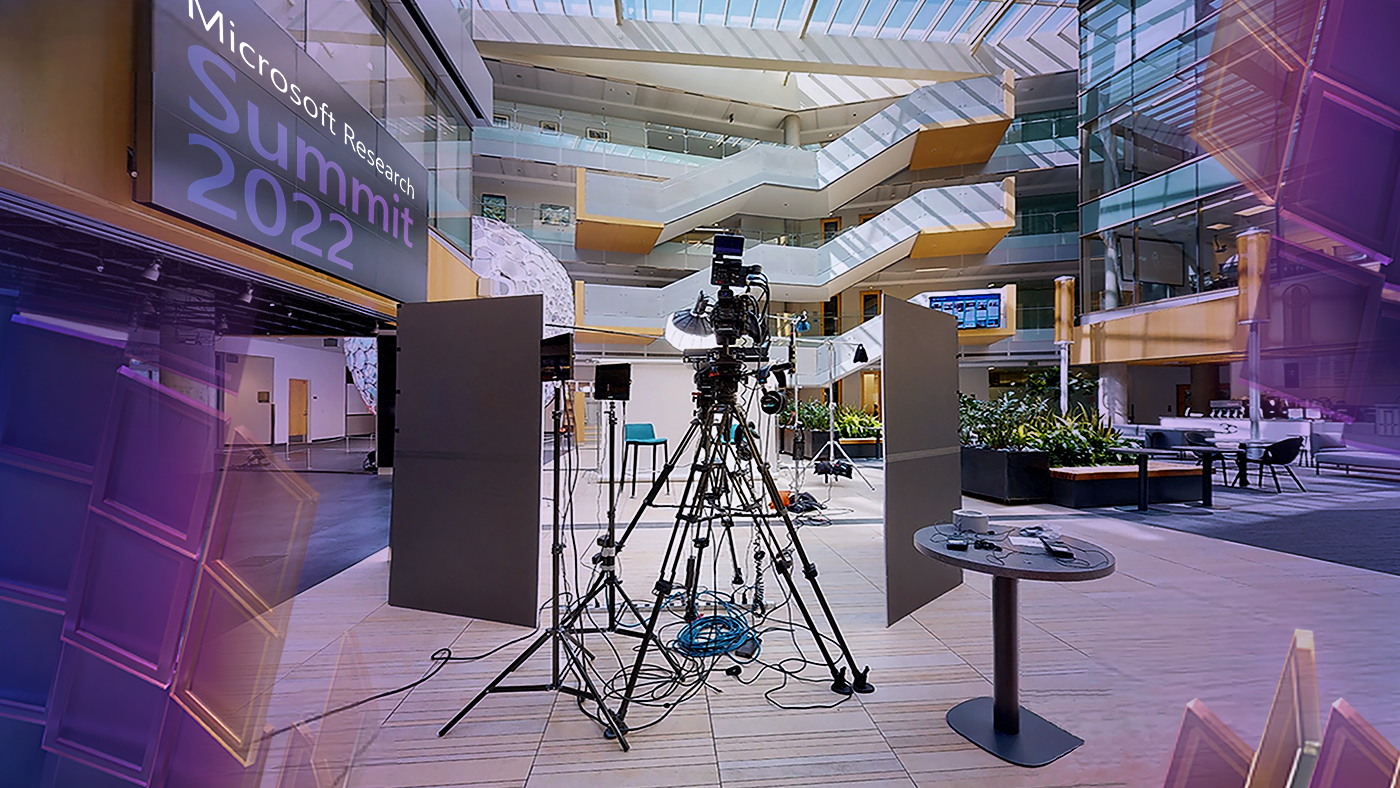By Rob Knies, Managing Editor, Microsoft Research
On Feb. 4, Microsoft Research unveiled its latest lab, to be called Microsoft Research New England and to be based in Cambridge, Mass., in the midst of the Boston region’s bustling academic environment. Jennifer Chayes will serve as managing director of the lab, with her husband and longtime professional collaborator, Christian Borgs, as deputy managing director, though, given the nature of their relationship, the roles could prove a bit more nuanced than the titles might indicate. The pair, until now based at Microsoft Research Redmond, have established an alliance unique in industrial research, easygoing and playful, yet laser-focused on their shared research agenda. A native of White Plains, N.Y., Chayes, 51, happily proclaims, “I’m proud to be a member of the AARP!” Borgs, 50, of Düsseldorf, Germany, smilingly recalls that, together, the couple recently celebrated “one hundred years of life.” But when a recent discussion turned to their latest venture, they made it clear that their plan for success is no laughing matter:
Q: Why New England, and why now?
Microsoft Research Podcast
Collaborators: Renewable energy storage with Bichlien Nguyen and David Kwabi
Dr. Bichlien Nguyen and Dr. David Kwabi explore their work in flow batteries and how machine learning can help more effectively search the vast organic chemistry space to identify compounds with properties just right for storing waterpower and other renewables.
Christian Borgs: New England is a prime location on the East Coast. If you want to hire talent, you want to go where the talent is located. It makes a lot of sense that we should have a research lab on the East Coast. New England has Harvard, MIT, Boston University, and lots of other universities. It is definitely a center of academic research.
Jennifer Chayes: Microsoft is a global company, and we are becoming a more distributed company. We have more remote locations, and it just seemed like the right time for Microsoft to open a research lab on the East Coast. There’s a lot of talent we want to hire on the East Coast. There are phenomenal universities with which we want to interact. And this is especially true in certain fields of research as we move more and more toward the online world. This is the time to be doing that kind of research.
Q: Starting a new research lab is a rare opportunity. You both must be extremely excited.
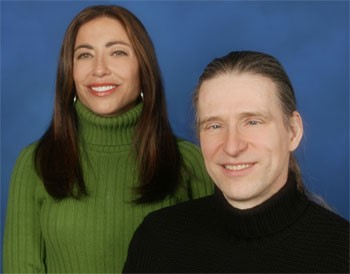
Jennifer Chayes and Christian Borgs constitute the leadership team for Microsoft Research New England, the organization’s sixth research lab.
Chayes: We are incredibly thrilled. When you do research for a long time, you have visions of where you think research is moving, and being able to head up a lab, we can actually try to realize some of those visions.
First, we hope to create a center for fantastic interdisciplinary research. Many academic fields are siloed now, and that’s getting in the way of doing the research that needs to be done. A research environment like we can create at Microsoft Research will allow incredible interaction across disciplines. That’s a big part of our research vision; we want to combine core computer science, especially the more mathematical and theoretical aspects of it, with the social sciences, and we want to do it in an environment in which we won’t just have researchers doing fantastic research side-by-side, but they also will be helping to create new fields at the boundary of computer science and the social sciences.
Borgs: I, too, am excited about building this lab in the incredible Boston-Cambridge area. But I also find it very exciting that Microsoft now will have a lab which is headed by a woman. This sets an example for the whole industry, creating a role model for other women and showing that there do exist leadership roles up to even the leader of a whole research lab.
That should be very exciting for younger women, both in Microsoft and outside, even to teenage girls, to see that there are women researchers at all levels.
Q: At first glance, the social sciences wouldn’t seem a natural area for Microsoft to be investigating, but clearly you have decided that it is. Why?
Chayes: If you look at where the computing experience is headed, where the online experience is headed, and where Microsoft’s business is headed, we should be developing expertise in economics so that we understand how people value things, in sociology so that we understand how people interact with one another, in psychology so that we understand what makes people do what they do, and all of this in the online context. If we’re going to help build the social networks of tomorrow, if we’re going to come up with new business models so that we can monetize them, if we are going to help to come up with productivity software so that people can collaborate online, we need to understand more about people: who they are, how they value things, and how they interact with each other.
Borgs: I think there is a traditional separation between engineering and business strategies. But in the online world, where things happen so fast, you can’t really design your product without thinking about what business strategy you have. Suddenly, the interaction between social sciences, in particular economics, and the technology you want to develop becomes much closer, so it becomes much more important for Microsoft to not separate these things, because the business can’t really decide about the strategy without seeing the technology which is developing, and the other way around. Otherwise, you develop a technology that is cool but can’t be monetized, or you develop a business strategy without cool technology behind it. This interaction of strategy and technology makes it important for Microsoft to think about the social aspects of the products we will create.
Chayes: In a technical sense, there is a field being studied much more now in computer-science departments, algorithmic game theory, which is a way of figuring out what to do when you have many self-interested parties interacting with one another, such as people on a social network or advertisers who are paying us to match their ads with keywords. The science behind that is computer science and economics, and the outcome is new business models for us and better online experiences for our customers.
Q: What initial goals have you set for the lab?
Borgs: Our initial goals can be described on two levels. One is to interact with the local university community and with our local product groups. The other is to advance the state of the art in these joint areas of algorithms and social sciences.
Q: Please discuss your professional backgrounds and how they have prepared you to create and operate a new research lab.
Chayes: My background is extremely varied. It’s a walk through many branches of science—not quite a random walk! I started as a biology undergraduate. I was in graduate school in physics—incidentally, with Nathan Myhrvold [former Microsoft chief technology officer who helped push for the creation of Microsoft Research]; we were classmates in a class of only 20 people. Then I was a professor of mathematics. And for over 10 years now, I’ve been doing computer science at Microsoft, while co-managing the Theory Group with Christian and recently also being the research-area manager for both Theory and Cryptography. So I believe I’m well prepared to do interdisciplinary work and to create an environment in which this type of work will thrive.
Also, during the past 10 years, I’ve learned how Microsoft manages research. We’ve been very, very lucky to be in Microsoft Research and have the vision and the philosophy of Rick Rashid [Microsoft Research senior vice president], that you hire great people and advance the state of the art. I think we’ve really absorbed that.
Borgs: My background is similarly diverse. I started off as an experimental physicist as an undergraduate, then went into theoretical physics and eventually wrote my Ph.D. in mathematical physics. I became a professor of physics and got a bit of management experience, because in Germany, if you are a full professor, you get a little group associated with it. Then I started to look at problems at the boundary of physics and computer science, which was one of the reasons why Nathan hired the two of us. I’ve been working here on problems in computer science, turning toward algorithms, thinking about networks, which turned out to be very useful when we turned our focus to search and advertisement. This type of background has prepared me to lead an interdisciplinary lab.
In addition, I bring some international experience. I started in Munich, I studied in Paris, I was in Zürich as a post-doc, and I’ve been living in the U.S. for 11 years. I think we together bring quite a diverse background to head this new lab.
Q: What’s first on the agenda?
Chayes: First, we have to start hiring great people. In certain fields, in the fields that we know better, we already have wish lists in our heads, and we’re going to start to operate on those wish lists. In other areas, in which we are relative novices, we have already sought out the counsel of some experts who are going to introduce us to those communities so that we can learn who the great people are in those areas. There are many great people, but who among the great people do we think could bring the most to Microsoft?
There are a lot of other things that have to be done.
Borgs: For example, we have to create a space. Microsoft has rented a few floors in a building in Cambridge, Mass. We have to build our space. And we need to build it in a way that facilitates interdisciplinary research.
Chayes: Christian recently flew to our Silicon Valley lab to spend a couple of hours looking at their new space. Microsoft Research in Redmond has also just built this great new building. In these new buildings, Microsoft Research provides spaces and technologies that encourage interaction and collaboration. During the next few months, we will be working with architects and our facilities people to build our Cambridge space to facilitate interdisciplinary collaboration, drawing on the experience gained from the new buildings in our Silicon Valley and Redmond labs.
We also want to start to interact with the universities in the area. Last week, the two of us met with some deans and provosts from universities in the Boston-Cambridge area, and we want to start building those relationships as soon as we can. Some of them will build on our personal relationships with scientists whom we already know at these universities, but we also want to build institutional relationships, because we think that that will benefit Microsoft, benefit the universities, and make the lab a very exciting place.
Borgs: Another relationship we are starting to build is with the Microsoft people already in the area. We have started talking with Reed Sturtevant, who heads the new Microsoft Concept Development Center, an incubation center in Cambridge. We also want to build relationships with the people in the local companies Microsoft recently has acquired or is in the process of acquiring—Groove, SoftGrid, and FAST. That will be very important.
Q: How is starting a new lab going to affect your ability to do continued research on your own?
Borgs: When we were in the Boston-Cambridge region last week, talking to universities, describing our plan for the new lab …
Chayes: … and saying that we wanted to continue doing research …
Borgs: … we were mentioning that we definitely want to continue doing research, want to be, ourselves, at the boundary of these areas, because, as always in research, you don’t want to tell people what to do. That’s not how research works.
How do you get people to interact? You set an example. You start to collaborate across boundaries. This is very important for us to do ourselves, which means we need time for that. Everybody has pointed out that we should delegate part of the tactical running of the lab. Obviously, the directors have to do the strategic running of the lab, but the tactical running of the lab we will have to delegate, find staff who can do that, so that we have some space left to do our own research.
Chayes: The other way that we’ll continue to do research is by working 16 hours a day, which we do anyway. Hopefully, we’ll only spend 8 or 10 hours a day on strategy for the lab, and that will still leave 6 to 8 hours a day for research.
Q: Now, there’s a plan!
Chayes: Right, and we’ll do research as we eat. (Laughter.)
Q: How big do you see the lab becoming? Have you set hiring targets or numbers?
Borgs: At this point, it’s hard to say how big the lab will become. Across all of Microsoft Research, we want to have the best and brightest researchers working for us. With that high bar, finding and hiring people have always been our constraint on growth, rather than any particular numerical target. It may take a while for the lab to grow, or it might go fast. Either way is fine with us as long as we’re hiring the best people.
Chayes: A second aspect is that our lab will have somewhat of the quality of an institute, in which we have many post-docs and sabbatical visitors from universities, short-term visiting professors, and interns. On any given day, it may be that up to two-thirds of the researchers are not part of the permanent research staff.
Microsoft has always derived tremendous value from these research visitors. They spend a bit of time with us and then go back to universities really understanding Microsoft and the problems we care about. They give these problems to their students. They later send their students to us and to product groups at Microsoft. We can use this lab to allow people at universities to experience how wonderful Microsoft is, to understand the problems we’re trying to tackle, and to help us to tackle those problems.
Q: Finally, as a married couple, how do you make your personal and professional relationships work, and how will that derive to the benefit of the new lab?
Chayes: We’re both passionate about our work, and we work many hours per day. It would be very hard for me to work 16 hours a day and have a good marriage if I weren’t married to my coworker, who’s also passionate about this same work.
There are two aspects of it. For us, it’s good because we have enough time with each other, and we can also share our enthusiasm with each other. We can strategize together.
Borgs: If necessary, we can play good cop, bad cop.
Chayes: We have a completely trusted colleague so that, when one of us travels, we know that the other one is one of the cofounders of the lab, so our vision will be in place.
Microsoft gets benefit from this because the whole is greater than the sum of the parts.
Borgs: And Microsoft also benefits from it because if I’m going to the beach with my wife, and I’m talking with her about Microsoft Research and our strategy, even on my vacation, Microsoft derives benefit, which would not be the case if my wife worked at a university.
Chayes: This is an incredible company, and it’s really forward-looking, investing in basic research when a lot of other companies and government agencies are cutting back on their investments in basic research. It’s a wonderful thing that Microsoft is doing, and it’s also a smart thing. If we look at the investments Microsoft has made in basic research over the past 15 years, lots of them have ended up in products, and lots of them have opened up new fields which will ultimately lead to advances in Microsoft products. But Microsoft does not look for a short-term bottom line; Microsoft invests in research for the long haul, and I think that’s wonderful.


